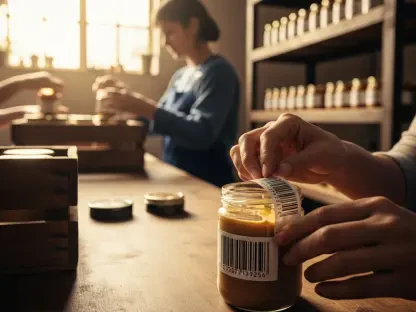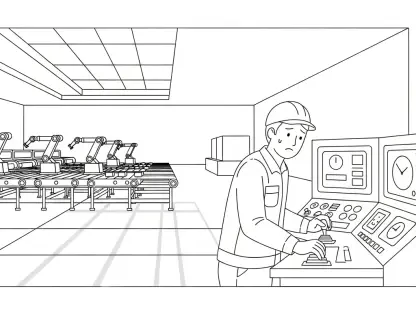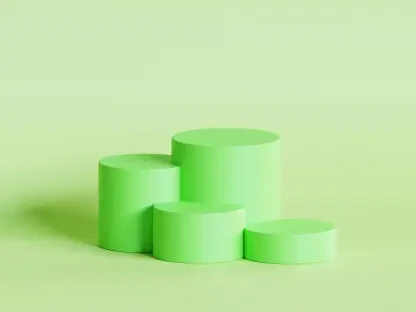Today, we’re thrilled to sit down with Kwame Zaire, a seasoned manufacturing expert with a deep focus on production management and innovative practices in industries like electronics and equipment. With his thought leadership in predictive maintenance, quality, and safety, Kwame brings a unique perspective on operational excellence. In this conversation, we dive into the dynamics of the paint and coatings industry, exploring robust growth trends, pricing strategies amid fluctuating raw material costs, margin sustainability, domestic and international demand patterns, and the strategic moves companies are making to stay competitive.
Can you walk us through the key drivers behind strong quarterly performances in the paint industry, particularly in the first half of the year?
Absolutely. What we’re seeing in the paint industry, especially with leading players, is a combination of solid volume growth and strategic execution. Double-digit increases in volume—say around 11%—coupled with value growth of about 6%, point to strong consumer demand and effective market penetration. This kind of performance often stems from a broad-based approach, meaning growth isn’t limited to one region or product category but spans across various markets and segments. It’s a sign of robust operational strategies and adaptability to market needs.
How do you think companies achieve such significant volume and value growth in a competitive market?
It comes down to a mix of innovation, brand strength, and meeting consumer needs at the right time. Companies that invest in product development and marketing tend to capture more market share. For instance, aligning product offerings with seasonal demands or regional preferences can drive volumes. Value growth often follows when there’s a focus on premium products or improved retailer relationships that incentivize pushing higher-margin items. It’s about creating a win-win for both the company and its distribution network.
With raw material costs showing slight deflation, how does this influence pricing strategies in the industry?
When raw material costs soften—let’s say by about 1.6% as we’ve seen recently—it gives companies some breathing room. They’re not under immediate pressure to raise prices, which is a big relief in a competitive space. This stability allows firms to maintain their pricing without alienating customers or sacrificing margins. Instead, they can focus on optimizing costs elsewhere or reinvesting savings into innovation or marketing to strengthen their position.
What’s your take on how margin improvements are being driven in this sector right now?
Margin gains, like standalone margins hitting around 18.5% or gross margins nearing 43%, are often a result of a favorable product mix and controlled input costs. When companies push higher-value products or premium lines, it naturally boosts profitability. Combine that with softer raw material prices, and you’ve got a recipe for stronger margins. It’s also about operational efficiency—streamlining production and reducing waste plays a big role in sustaining those numbers.
How do domestic demand trends, especially with challenges like uneven weather, impact specific categories like exterior paints?
Uneven weather patterns, such as prolonged monsoons, can definitely hit categories like exterior paints hard because application often depends on dry conditions. However, companies can offset this through strong execution—think regional strategies or focusing on B2B channels that aren’t as weather-dependent. What’s interesting is when rural and urban demand grow at similar paces despite these challenges; it shows resilience in consumer behavior and the effectiveness of targeted initiatives to keep sales steady.
Turning to international markets, what’s fueling growth in regions like Asia and the Middle East for paint companies?
Growth in international markets—around 10.5% in constant currency terms—often comes from a mix of rising demand and strategic expansion. In places like Nepal, Sri Lanka, and the UAE, you’ve got burgeoning construction sectors and increasing consumer spending on home improvement. Companies that tailor their offerings to local tastes and build strong distribution networks can capitalize on this. It’s also about timing—entering or expanding in markets at the right moment when economic conditions are favorable.
How do currency challenges in certain regions affect operations, and what strategies help manage those risks?
Currency devaluation, like what’s happening in some African markets such as Ethiopia, can squeeze profitability by increasing the cost of imported materials or reducing the value of local revenues. Companies often manage this by hedging currency risks, localizing supply chains to reduce dependency on imports, or adjusting pricing in local terms to maintain margins. The expectation of stabilization over time also helps; firms may absorb short-term hits while betting on long-term recovery.
What’s your forecast for the paint and coatings industry over the next few quarters, especially regarding demand and margin trends?
I’m cautiously optimistic about the next few quarters. Demand should hold steady, especially if domestic markets see a recovery in segments like decor during the second half of the year. Internationally, growth in key regions will likely continue, barring major currency or geopolitical shocks. Margins should benefit from sustained softness in input costs, potentially staying in the 18-20% range for leading players. The real test will be how companies balance innovation and competition—those who keep investing in brand and product differentiation will likely stay ahead.









